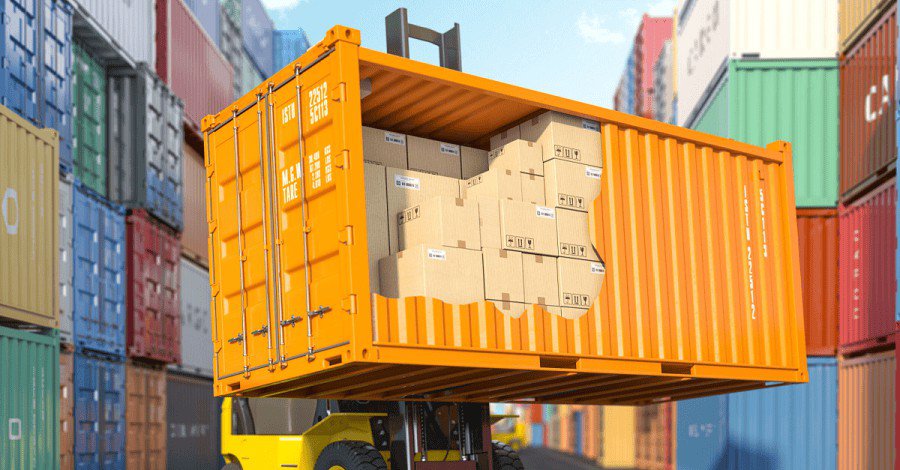International cargo exports depend on container shipping, especially in the maritime sector. A majority of the cargo being shipped is done by ocean. These containers are widely visible worldwide on all ocean routes, having a surge in demand with globalization.
Shipping containers come in standard sizes and varied styles suited to long-distance travel. Transporters can transition these from one transport method to the next without opening the storage unit. Aside from being a primary force in the global economy, there’s much more to know about these vital steel systems.
The Cost of Shipping Containers
A steel storage container is used for shipping cargo among many other purposes. While they’re leased to freight shippers for moving cargo loads, the growing trend is to create so much more from refurbished containers, including commercial, industrial, and even residential units.
Many question the cost of either leasing or buying a used storage system. Here we’ll concentrate primarily on the price point for e-commerce rental of standard units to ship freight like that in the maritime industry.
The costs
Assessing the cost of shipping a container overseas depends on a few variables, such as whether a freight forwarder is used, volume discounts, and market conditions.
For instance, when a crisis increases the demand, creating substantial storage shortage that strains the industry, it can lead to roughly triple the cost of transport.
The weight of the goods and specific handling requirements for things like hazardous materials or refrigerated cargo will impact costs. The primary variables affecting the price point are size and the final destination from the original location.
The steel storage unit size
The standard sizes include 20-foot and 40-foot containers for goods’ delivery to international distribution centers. Each is sufficiently sized to hold enough while fitting into the ship’s loading lots. Also, rail cars and trailer trucks transporting these containers can readily carry these sizes.
While a standard 10-foot size or a custom container could cost less overall for overseas transport, it can be more costly than the 20- or 40-foot containers because these are more challenging to load. Go to https://container-news.com/container-shipping-guide/ for tips on this industry.
Origin/destination
According to “Forbes, 2023” the cost for steel storage transport in US “ranged roughly between $1200 and over $7500 with an average of approximately $3000.”
With overseas transport, the storage unit costs are higher including moving these to the ports, ocean shipment, and moving the container from the port to the final location.
Other expenses include loading/unloading, particularly when containers are shifted multiple times on their journey, tariffs/customs, and detention/demurrage fees. International transport costs are widely based on origin/destination and distance to/from the ports at each end.
Several freight companies offer calculators on their websites to give customers an instant freight quote. This estimate can be confirmed after you have the final details. Go here for effective ways to reduce costs for container transport from overseas.
Controlling Costs

While transport companies determine the cost of sending a full freight load overseas, many variables affect your prices. The difference could be minimal for each container, but it can add up. Following a few simple tips to optimize the supply chain can improve the profit margin and heighten the brand’s success.
Floor loading or pallets
Two ways for loading products include floor loading or on pallets, with advantages and downsides for each.
Floor loading into a container creates added space for goods because the pallets are eliminated. If transport costs are high, the extra cargo added to each container can save money, making this method worthwhile. Also, some more bulky cargo could be unsuitable for pallet loading.
Floor loading is more challenging to secure, creating a greater risk of damaging the goods while shipping. Also, because the fulfillment warehouse has to unload the container by hand, the floor-loaded shipment is more costly in the end.
Some major warehouses won’t accept floor-loaded steel storage units or have specific situations under which they’ll accept them.
Pallet loading secures goods onto a pallet made from durable wood, either strapped down, shrink-wrapped, or both. The cargo is protected from possible damage if the container proves to be (non) water-resistant.
The pallet goods can be readily unloaded and moved around the warehouse on a forklift, simplifying the process. It saves time and costs.
Purchase Costs for Used Shipping Containers
Storage containers are for more than just shipping freight overseas. More people today are using these durable steel structures for residential, industrial, and commercial purposes.
They’re creating multi-story structures by stacking containers or developing tiny houses. The units are efficient, affordable working, living, and storage systems. Buying one can range from roughly $2500 to approximately $20,000 for a new container.
The 40-foot is more expensive than the 20-foot, and anything over standard is higher in price. The condition will impact the cost of used units, and delivery fees to the final destination will be added.

